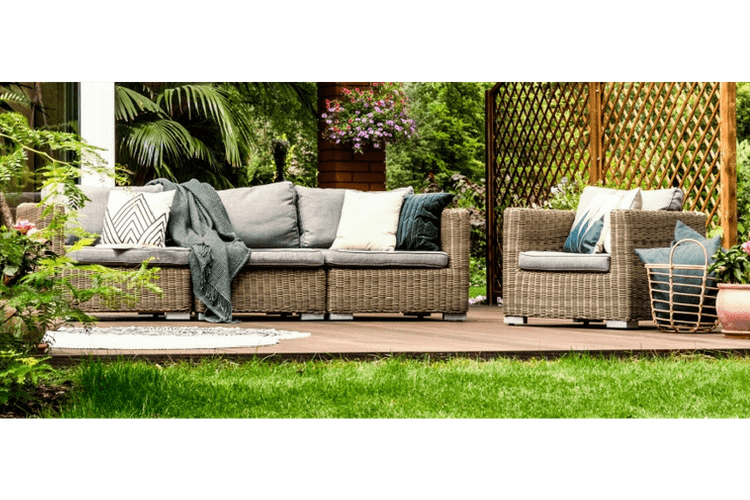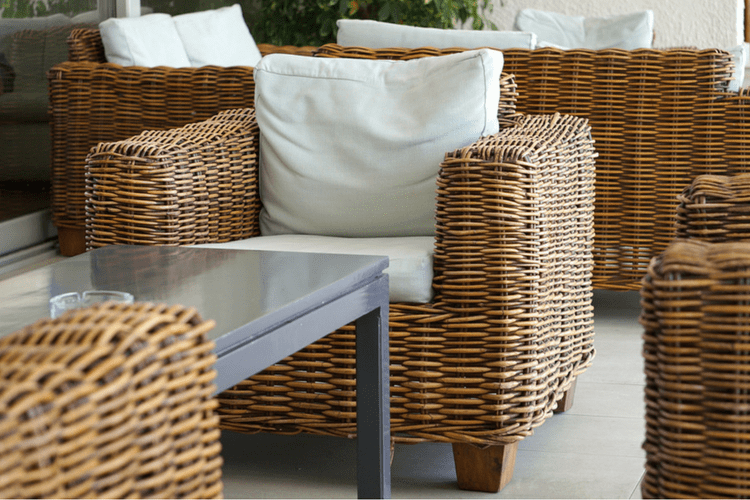How to Care for Wicker Furniture and Rugs
Wicker is one of the most popular types of furniture to put outside, since it’s durable enough to withstand the outdoors and still look nice. However, if you want your wicker furniture and rugs to last as long as possible, you’ll need to provide some regular maintenance. If you’re wondering how to care for wicker furniture and rugs, these tips on cleaning and protecting them should help you get started.

Keep Your Wicker Clean
The best way to keep your wicker looking nice for years is to clean it regularly with a trusted wood cleaning product, like TriNova® Wood Cleaner. Dust and dirt will likely appear on the surface over time, and if you don’t clean it off fast, it may be pushed into the crevices of the material. Luckily, wicker is easy to clean. You can start by vacuuming your furniture or rug, as this should quickly get rid of any dirt and dust stuck in it.
If vacuuming doesn’t remove all the dust or dirt, you can wipe down your wicker furniture or rug with a wet sponge that has soap on it. Then rinse it off gently with a hose, and allow it to dry outside for a couple of days. Just make sure it’s fully dry before you use it again, because sitting or stepping on wet wicker can damage it. Also, note that if your wicker furniture is made of any type of paper or grass materials, avoid using the hose on it. You can gently wipe it down with TriNova Wood Cleaner instead.
Remove Mold from Your Wicker Rugs or Furniture
Knowing how to care for wicker furniture and rugs means knowing how to deal with mold or mildew. After all, allowing fungus to continue to grow on it can cause damage over time. So if you see mold or mildew, use the brush attachment of your vacuum to start getting rid of it. You can then use a soft scrub brush if you need to scrape more off. Be sure to also mix bleach with water on a sponge, and then scrub the surface to remove the mold and mildew.
Then let the wicker dry for a few days before you use it again. Additionally, try to prevent more mold growth by moving your wicker furniture or rug to a spot that has low humidity and better air circulation. If you happen to live in a humid area, you may need to bring your wicker rugs and furniture inside the house, or at least cover it, during the months with the highest humidity. This will protect it and reduce the odds that you’ll have to spend time removing mold or mildew again.

Protect Wicker from Extreme Weather
Most wicker furnishings are meant to be outdoors, but that doesn’t mean they’re indestructible. They can’t always withstand inclement weather. Ideally, your wicker furniture or rugs are on a covered patio where they’re not constantly exposed to sunlight, rain, snow or other destructive forces.
This is because wicker does deteriorate over time when exposed to harsh conditions. For example, constant sunlight can dry out wicker and make it feel brittle, and it can even loosen the glue in it. Moisture from rain and snow can also damage the fibers and make the furniture warp. So if your area is known for any type of extreme weather, consider moving your wicker furnishings inside the house—or at least the garage—until the weather is milder. If you can’t move them inside, using a product like 303 Aerospace Protectant regularly can help prevent future damage. In addition, you might want to cover them with weatherproof covers to keep them nice when the weather is harsh. You’ll be glad you did this once the weather is nice enough to enjoy your outdoor wicker furniture again!






